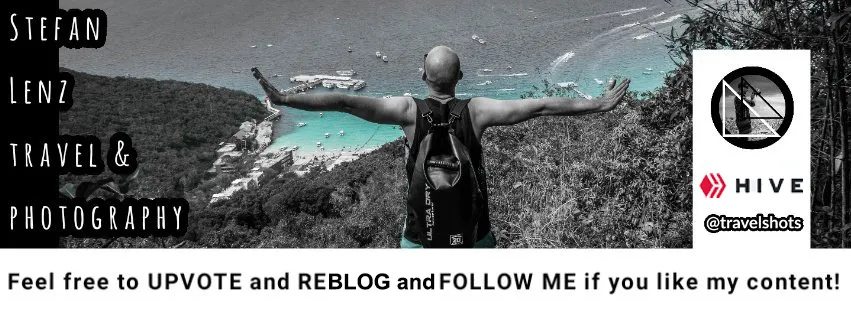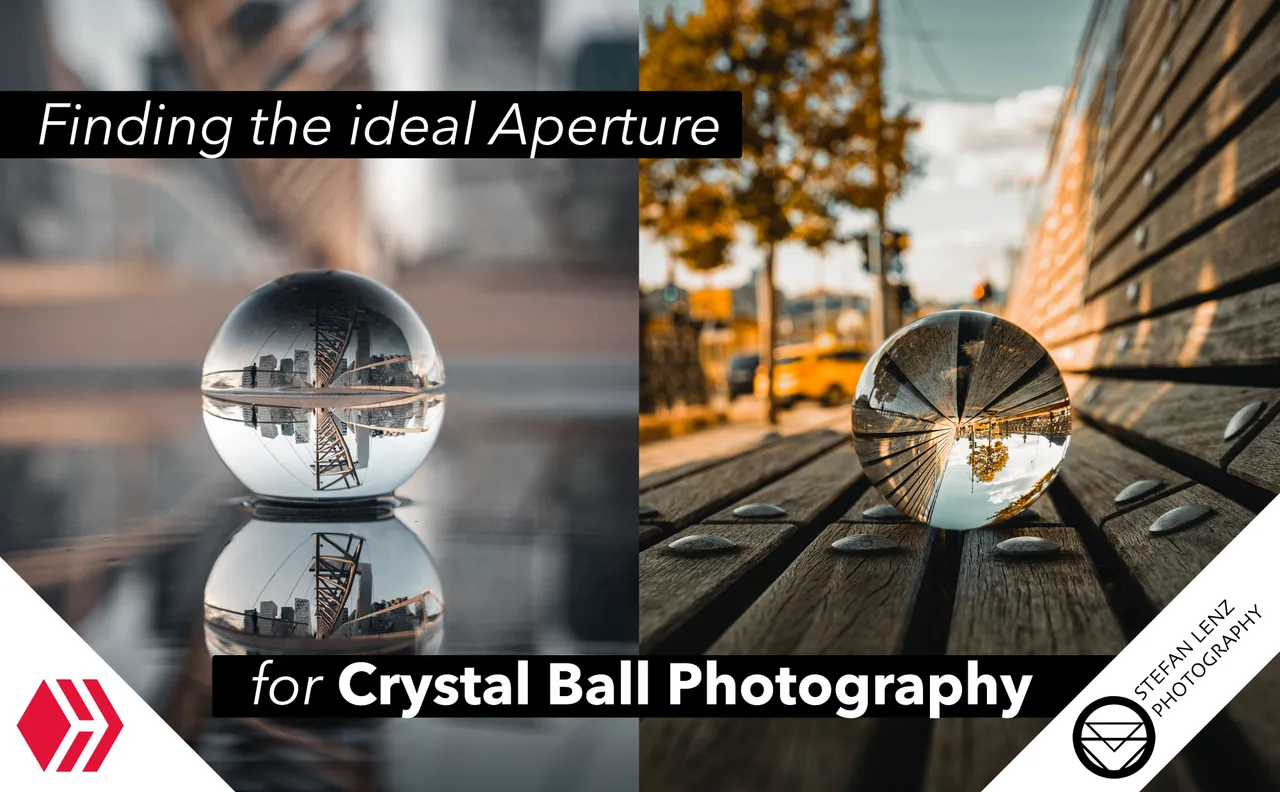
Hello guys! Today it’s about my specialty Crystal Photography again. In this post I would like to address a question that I am asked very often: What aperture setting should I use for glass ball photography? If you are expecting an answer in the form of a concrete number from me, I'm afraid I have to disappoint you. Unfortunately, this cannot be said in general terms, because which aperture has what effect on the image depends on the sensor size of the camera and the focal length of the lens. But what does that mean exactly? Let's assume an aperture of F4.0. If you shoot in wide angle with a bridge camera that has a relatively small image sensor, you will only achieve a slight background blur with this aperture. If, on the other hand, you use a mirrorless camera with a full-frame sensor in combination with a telephoto lens, the background will be very blurry with the same aperture setting of F4.0. Basically you can keep in mind, the smaller the image sensor and the shorter the focal length, the wider you have to open the aperture to create a blurry background. But does it make more sense to use a more open or more closed aperture? To answer this question, I have two comparisons that I would like to show you.
Hallo Leute! Heute geht es mal wieder um mein Spezialgebiet, die Glaskugel-Fotografie. In diesem Beitrag möchte ich eine Frage behandeln, die mir sehr häufig gestellt wird: Welche Blendeneinstellung sollte man für die Glaskugel-Fotografie verwenden? Wenn ihr nun eine Antwort in Form einer konkreten Zahl von mir erwartet, muss ich euch enttäuschen. Dies lässt sich leider nicht pauschal sagen, denn welche Blende sich wie auf das Bildergebnis auswirkt, kommt auf die Sensorgröße der Kamera und die Brennweite des Objektivs an. Doch was bedeutet das genau? Gehen wir von einer Blende von f/4.0 aus. Fotografiert ihr im Weitwinkel mit einer Bridge-Kamera, die einen relativ kleinen Bildsensor eingebaut hat, so werdet ihr mit dieser Blende nur eine geringe Hintergrundunschärfe erzielen. Verwendet ihr hingegen eine Systemkamera mit einem Sensor im Vollformat in Kombination mit einem Teleobjektiv, so wird der Hintergrund mit derselben Blendenstufe von f/4.0 stark verschwommen abgebildet. Grundsätzlich könnt ihr euch merken: Je kleiner der Bildsensor und je kürzer die Brennweite, desto weiter müsst ihr die Blende öffnen, um einen unscharfen Hintergrund zu kreieren. Aber ist es nun sinnvoller, eine eher offene oder eher geschlossene Blende zu verwenden? Um diese Frage zu beantworten, habe ich zwei Vergleiche, die ich euch zeigen möchte.
Aperture Comparison No. 1/Blendenvergleich 1
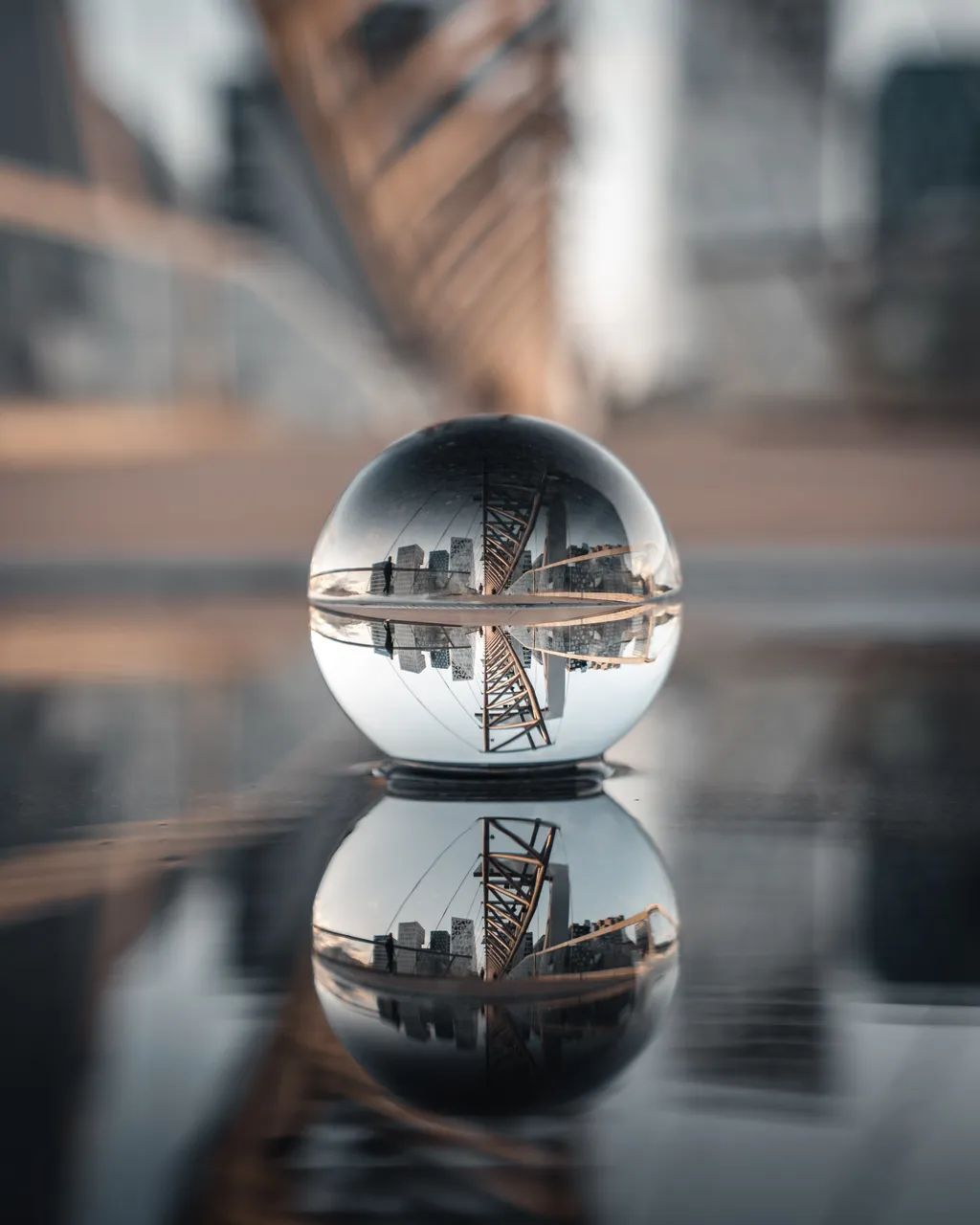
35 mm - F2.8 - 1/250 sec. - ISO100 | Acrobat bridge in Oslo (open aperture)/Akrobatenbrücke in Oslo (offene Blende)
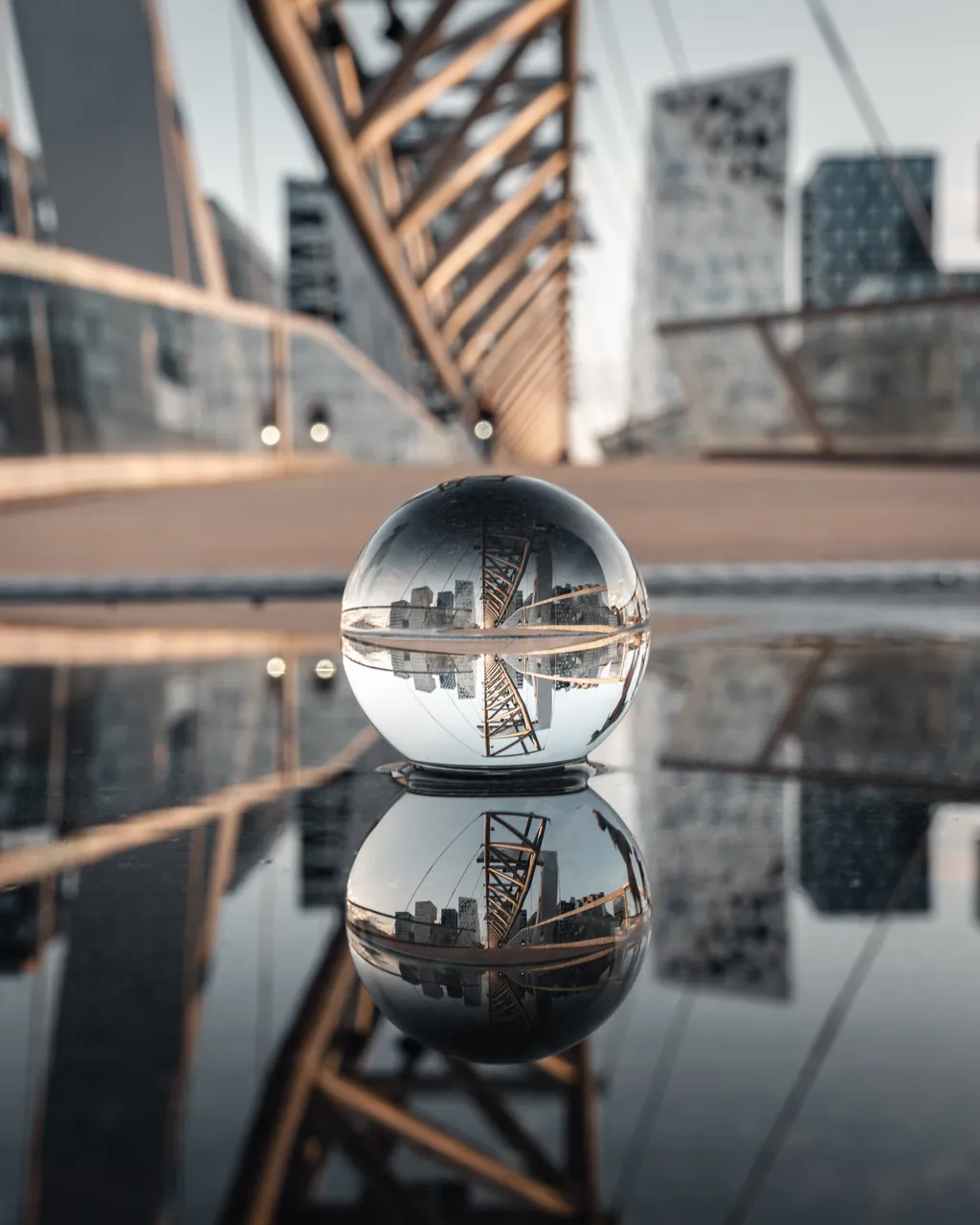
35 mm - F8.0 - 1/40 sec. - ISO100 | Acrobat bridge in Oslo (closed aperture/Akrobatenbrücke in Oslo (geschlossenere Blende)
Here you see exactly the same picture with two different aperture settings. With the open aperture, the background appears calm and harmonious. The glass ball is in full focus and attracts the viewer's attention. With the closed aperture, the background looks much more unsettled. The sphere is no longer so clearly recognizable as the central subject and the composition of the picture seems a little more incongruous. So I would definitely prefer the open aperture here.
Hier seht ihr die gleiche Aufnahme mit zwei unterschiedlichen Blendenstufen. Mit offener Blende wirkt der Hintergrund ruhig und harmonisch. Die Glaskugel steht dabei voll im Fokus und zieht den Blick des Betrachters auf sich. Bei geschlossenerer Blende wirkt der Hintergrund deutlich unruhiger. Die Kugel ist nicht mehr so klar als zentrales Motiv erkennbar und die Bildkomposition wirkt eine Spur unstimmiger. Ich würde hier die offene Blende bevorzugen.
Aperture Comparison No. 2/Blendenvergleich 2
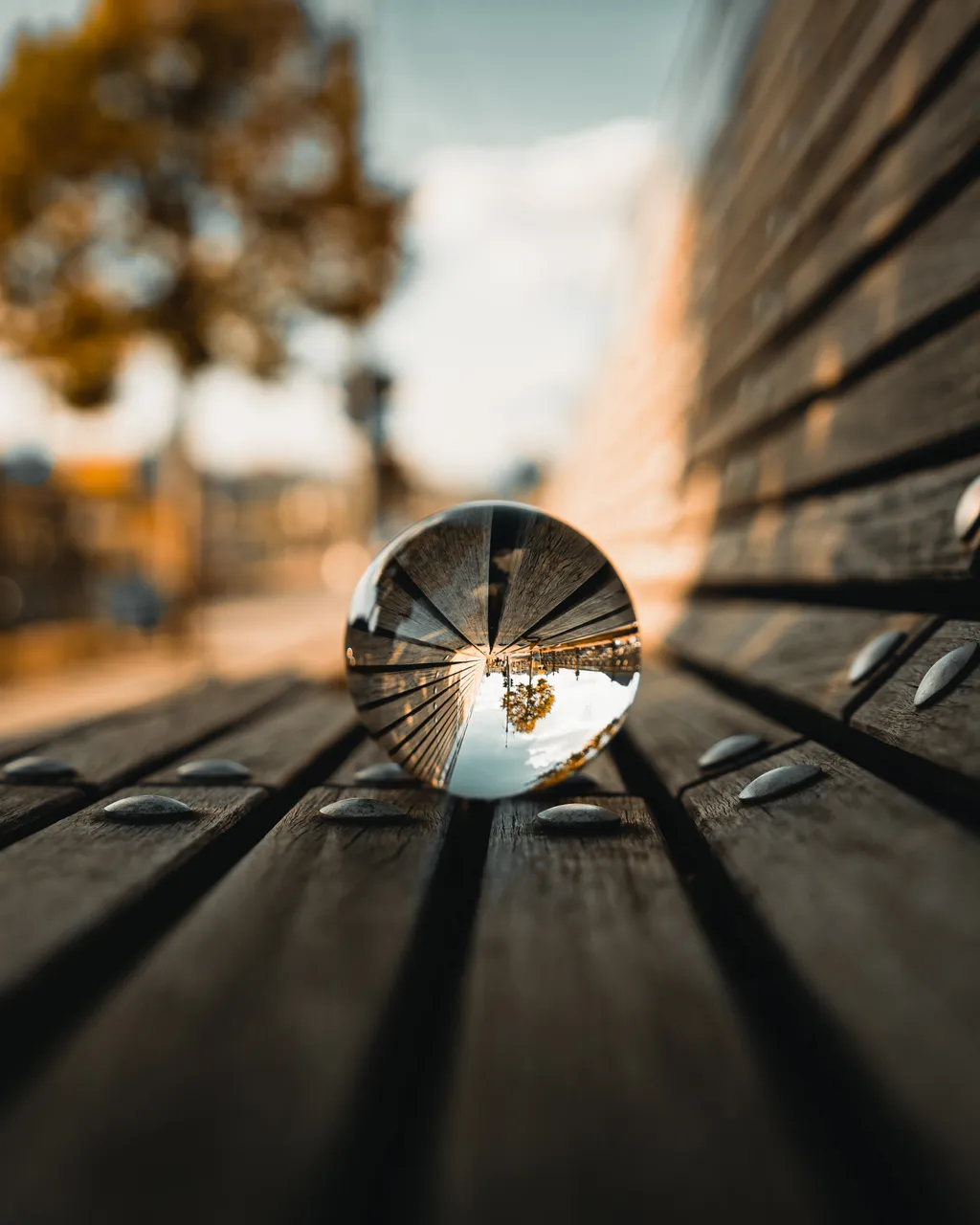
35mm - F2.8 - 1/500 sec. - ISO100 | Park bench in Budapest (open aperture)/Parkbank in Budapest (offene Blende)
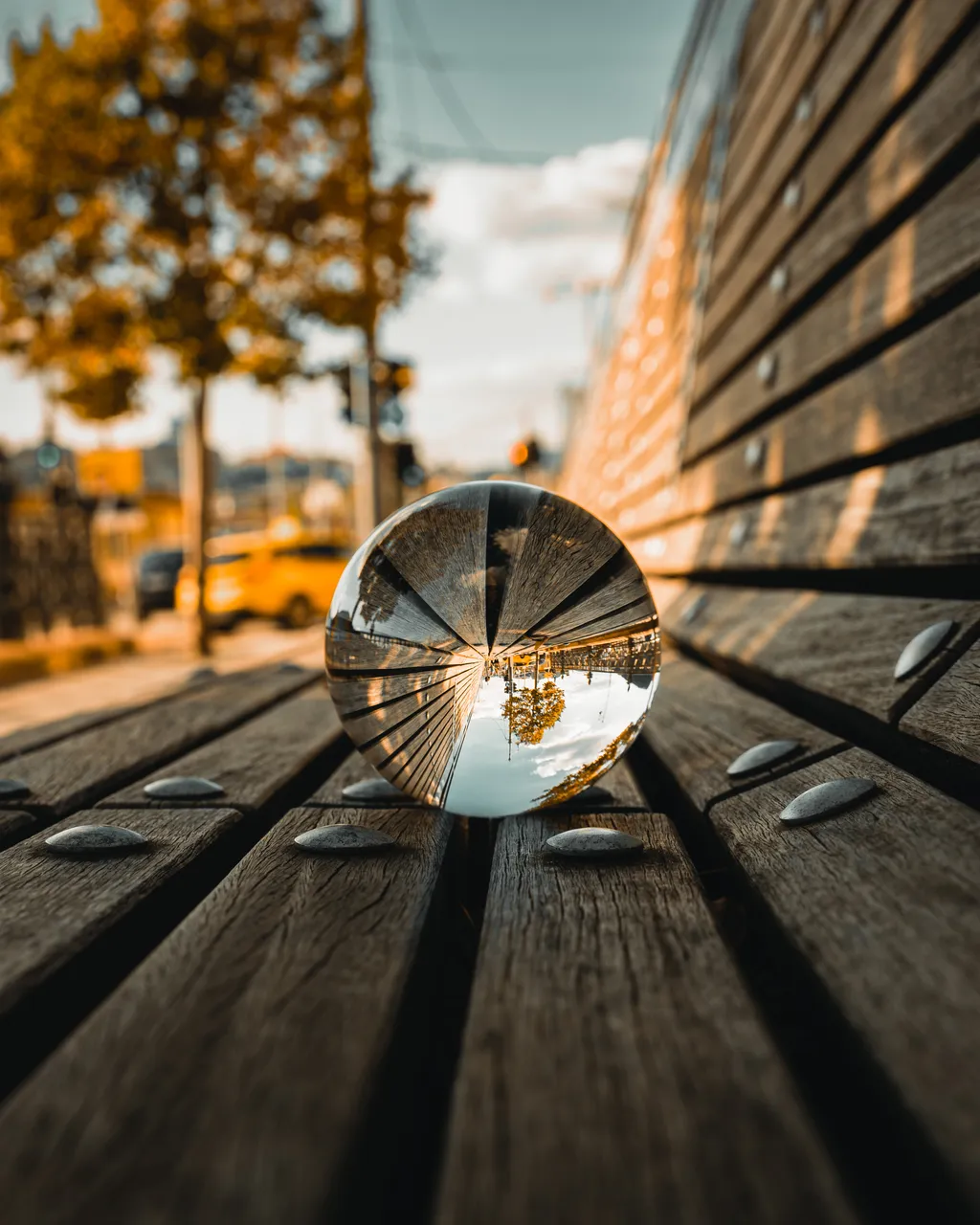
35mm - F8.0 - 1/50 sec. - ISO100 | Park bench in Budapest (closed aperture)/Parkbank in Budapest (geschlossenere Blende)
And again you can see two times exactly the same image with the same difference in terms of the f-stops. Interestingly, the effect of the two shots on the viewer is completely different. The photo with the closed aperture looks sharper and more brilliant. The leading lines that the boards of the wooden bench are forming are more clearly visible and more structured. They draw the eye much more intensively to the glass ball, on whose surface the reflection is also clearly visible. In the picture with the open aperture, on the other hand, the reflection is not exactly in focus. So the closed aperture clearly wins this comparison.
Und wieder seht ihr zwei mal exakt die gleiche Aufnahme mit demselben Unterschied, was die Blendenstufen angeht. Interessanterweise ist die Wirkung der beiden Aufnahmen auf den Betrachter hier aber eine ganz andere. Das Foto mit der geschlossenen Blende wirkt schärfer und brillanter. Die führenden Linien, die die einzelnen Bretter der Holzbank bilden, sind klarer erkennbar und strukturierter. Sie lenken damit den Blick viel intensiver auf die Glaskugel, auf deren Oberfläche auch die Reflexion klar und deutlich zu erkennen ist. Auf dem Bild mit der offenen Blende ist die Spiegelung hingegen nicht exakt im Fokus. Diesen Vergleich gewinnt also eindeutig die geschlossenere Blende.
Conclusion/Fazit
Perhaps you are now more confused than before and surprised that this topic is so complex. As you might have guessed, there is no recommendation from me with regard to the ideal aperture setting for glass ball photography. Instead, I would advise you to experiment with different apertures. Personally, I shoot almost all my crystal ball photos one after the other with aperture F2.8, F4.5, F8.0 and F11.0. Only in the course of post-processing I then decide which aperture has shown the best effect for the respective subject. But of course — and this should never go unmentioned in photography — this is and always will be a matter of taste.
Vielleicht seid ihr nun verwirrter als vorher und überrascht, dass dieses Thema so komplex und vielschichtig ist. Wie ihr euch denken könnt, gibt es somit von mir auch keine Empfehlung, was die ideale Blendeneinstellung für die Glaskugel-Fotografie betrifft. Ich würde euch stattdessen raten, mit verschiedenen Blenden zu experimentieren. Ich schieße fast all meine Glaskugel-Fotos nacheinander mit Blende f/2.8, f/4.5, f/8.0 und f/11.0. Erst im Zuge der Nachbearbeitung entscheide ich, welche Blende die beste Wirkung für das jeweilige Motiv gezeigt hat. Dies ist und bleibt aber natürlich – und das sollte in der Fotografie nie unerwähnt bleiben – auch immer eine Geschmacksache.
By the way.../Übrigens...
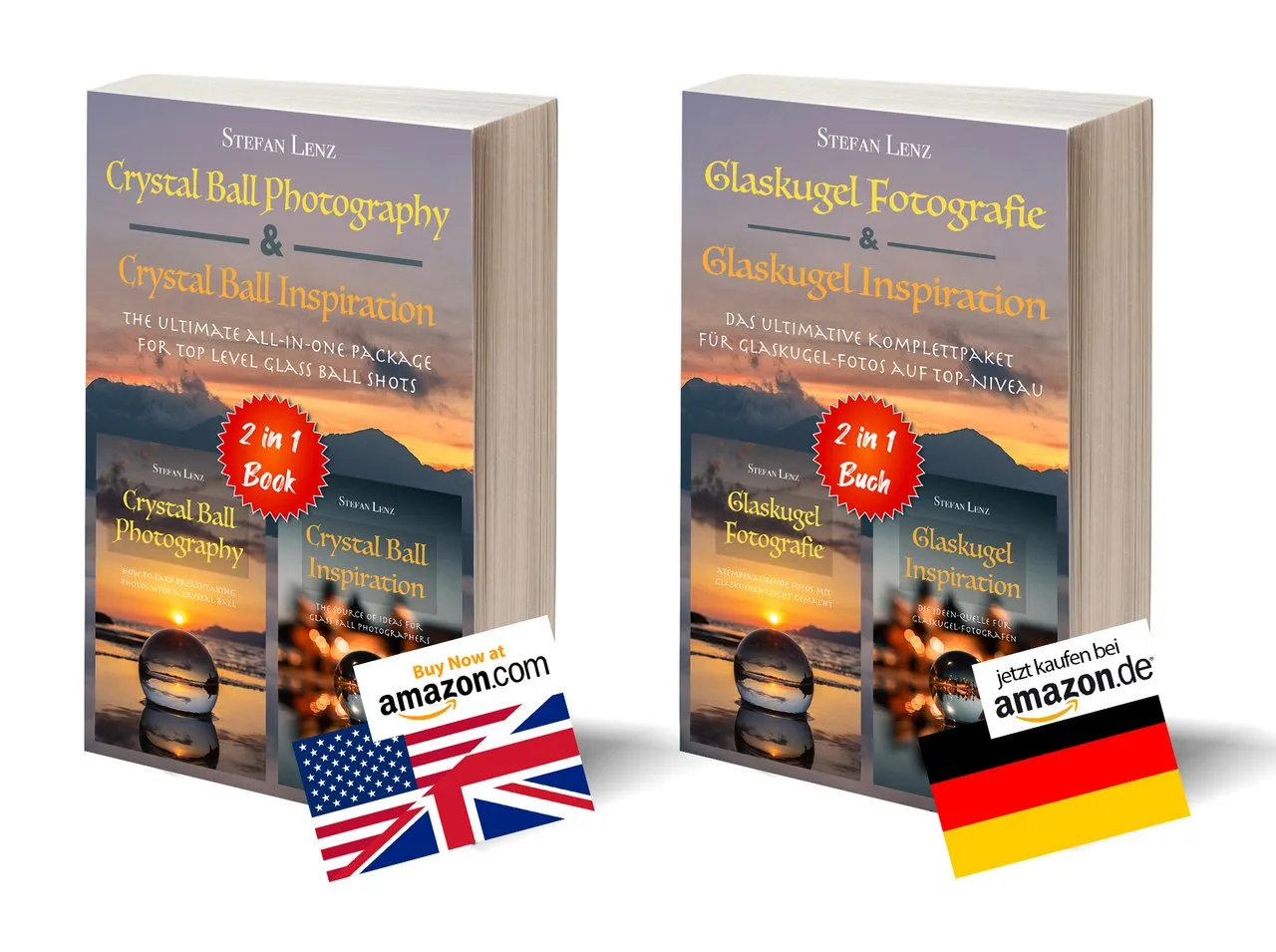
My two books on the subject of "crystal ball photography" are now also available as a 2 in 1 book at a special price. If you want to dive in deeper into this topic or if you are looking for new inspirations, you can have a look here:
Click here (Promo link)
Meine beiden Bücher zum Thema „Glaskugel-Fotografie“ gibt es nun auch als 2-1-Buch zum Vorteilspreis. Wenn ihr tiefer in das Thema eintauchen wollte oder auf der Suche nach neuen Inspirationen seid, könnt ihr hier mal einen Blick darauf werfen:
Hier klicken (Werbelink)
See you soon!/Bis bald!
Stefan
